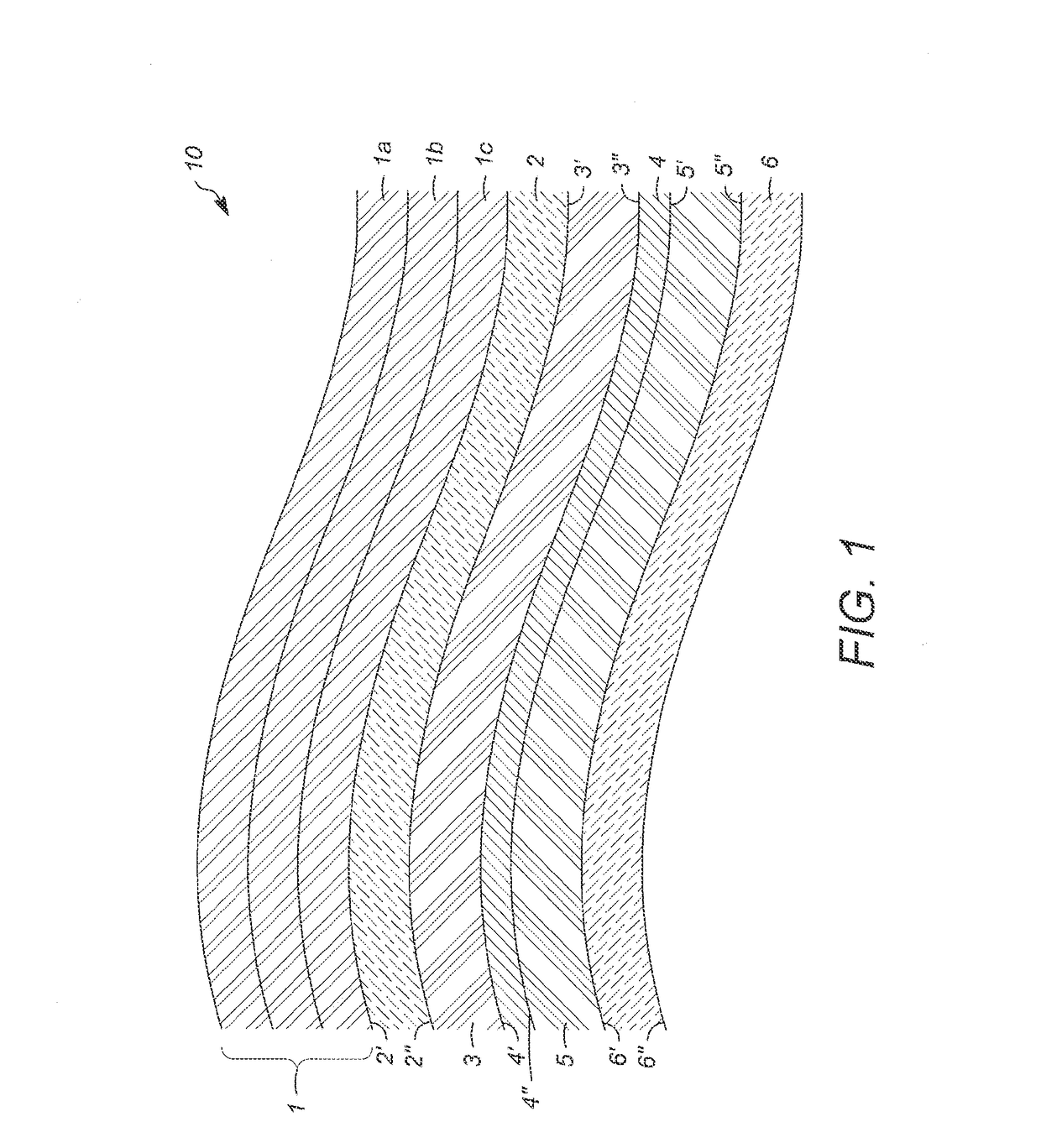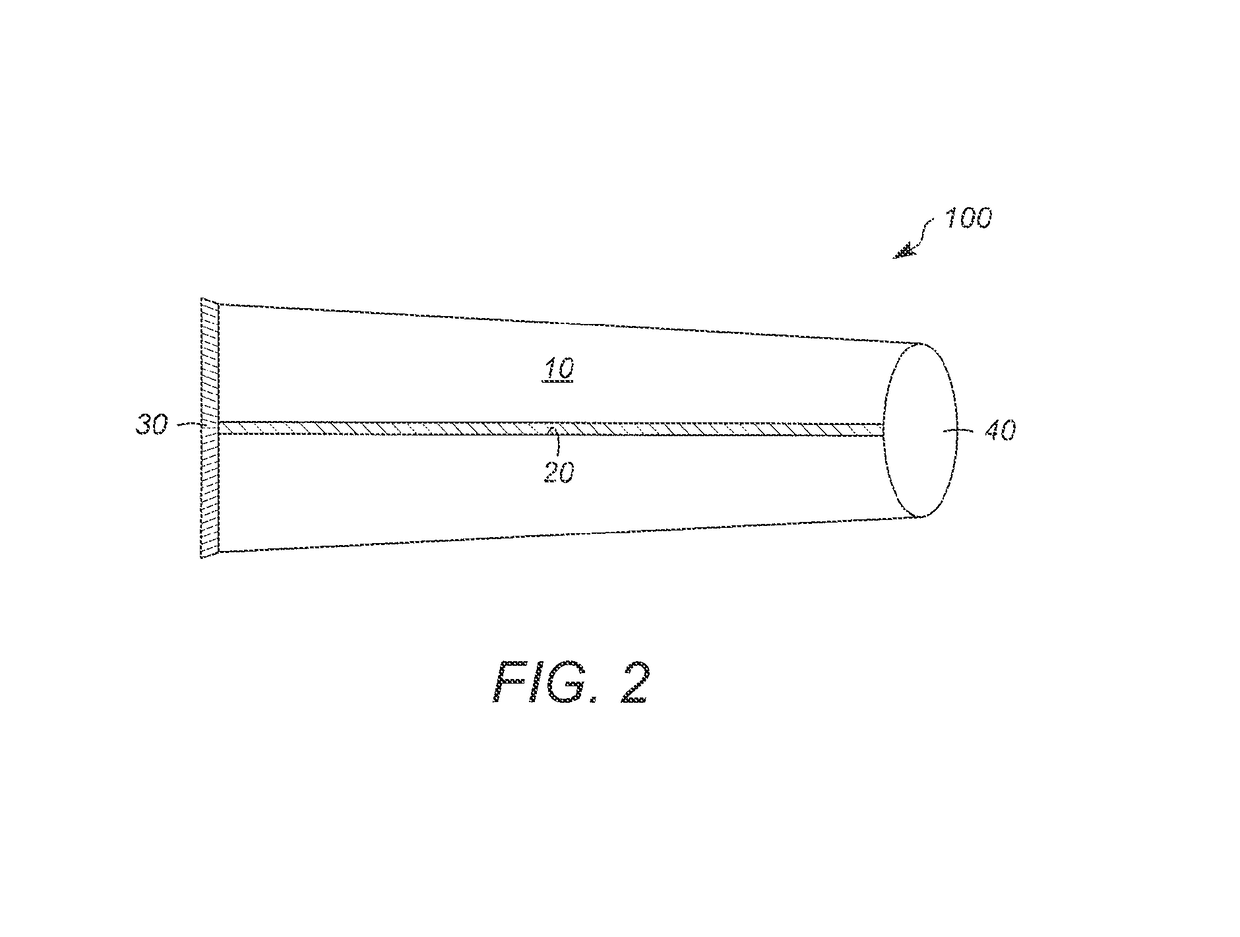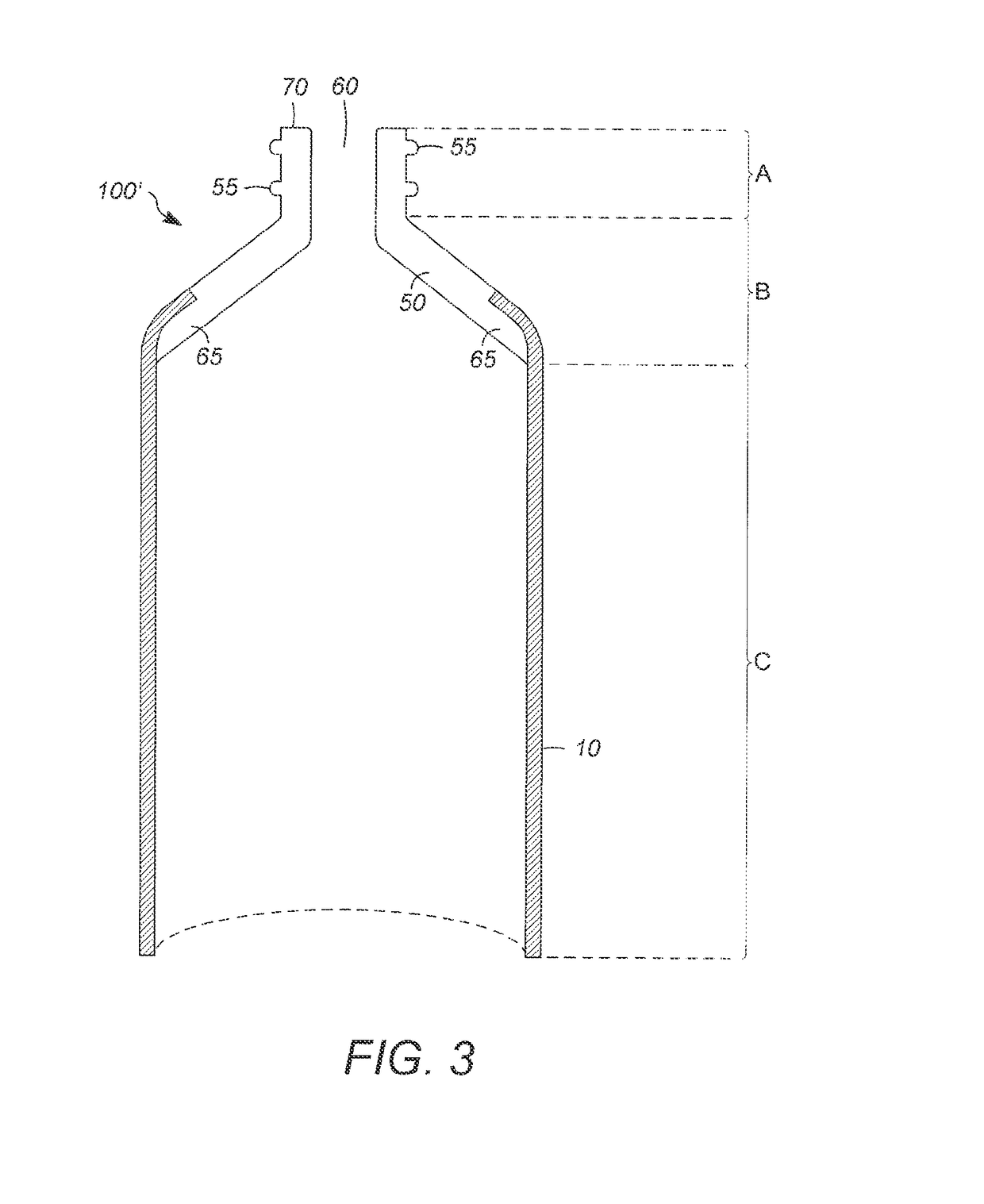Layered materials comprising aluminum foil and tubes made therefrom
a technology of aluminum foil and layers, applied in the field of multi-layer laminate materials, can solve the problems of easy denting during manufacturing, high production cost, and high production cost, and achieve the effects of reducing material cost, reducing material cost, and avoiding denting during manufacturing
- Summary
- Abstract
- Description
- Claims
- Application Information
AI Technical Summary
Benefits of technology
Problems solved by technology
Method used
Image
Examples
example 1
[0052]A multi-layered laminate material was made as described in Comparative Example 1, except that the aluminum foil had a tensile strength of greater than 70 MPa.
[0053]The laminate materials described in these examples were tested for their peak load to failure, according to a standard test method using an accepted testing machine. Specifically, the peak load to failure at a machine crosshead speed of 127 mm / min was determined for each of the prepared materials, using a 34 mm×102 mm sample, and the results are summarized in Table 1 below.
[0054]
TABLE 1Comparison of Strength for Laminate MaterialsComparativeComparativeSampleExample 1Example 2Example 1Total Caliper250μm279μm250μm(μm)Foil Caliper12.7μm12.7μm12.7μm(μm)Measurement7.657.538.08#1Measurement8.478.768.95#2Measurement7.849.978.95#3Measurement8.688.4311.46 #4Measurement8.729.428.70#5MeasurementN / A8.938.51#6Average8.27kg8.84kg9.11kgStandard0.490.841.20Deviation
[0055]These results demonstrate that, by using an aluminum foil lay...
PUM
| Property | Measurement | Unit |
|---|---|---|
| tensile strength | aaaaa | aaaaa |
| thickness | aaaaa | aaaaa |
| thickness | aaaaa | aaaaa |
Abstract
Description
Claims
Application Information
 Login to View More
Login to View More - R&D
- Intellectual Property
- Life Sciences
- Materials
- Tech Scout
- Unparalleled Data Quality
- Higher Quality Content
- 60% Fewer Hallucinations
Browse by: Latest US Patents, China's latest patents, Technical Efficacy Thesaurus, Application Domain, Technology Topic, Popular Technical Reports.
© 2025 PatSnap. All rights reserved.Legal|Privacy policy|Modern Slavery Act Transparency Statement|Sitemap|About US| Contact US: help@patsnap.com



